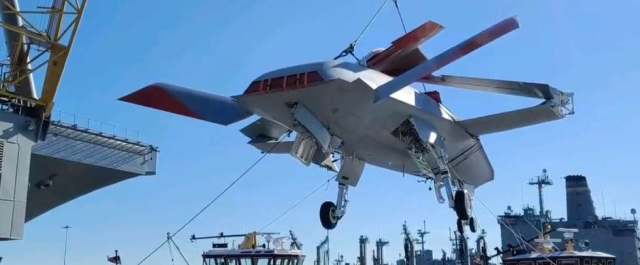The American Navy is learning to work with the MQ-25A Stingray unmanned tanker. Yesterday, December 3, the press service of the US Navy Aviation Systems Command (NAVAIR) announced that the first prototype of the "flying canister" was delivered to the deck of the aircraft carrier USS George HW Bush (CVN-77).
The US Navy indicates that flight tests from the aircraft carrier will begin a little later, and now the personnel will be trained to work with the drone. In addition, the operation of the MQ-25 engine will be checked in strong winds.
"We have made significant progress with the T-1 prototype and are reducing the risks to the program. And therefore, the main purpose of these tests is to look at the capabilities of the drone in strong winds. When you look at the air intake from above the MQ-25, it is very interesting to know how this thing will behave from the point of view of the engine with more than 25 knots of wind from all sides," said Rear Admiral Andrew Leuzel, director of the Department of Air Combat Operations of the US Navy.
It is known that the US Navy uses modified F/A-18E/F Super Hornet fighters (20-30% of the total number of aircraft) to refuel carrier-based fighters. The appearance of the MQ-25 Stingray in the air wing will allow the use of combat aircraft for their intended purpose. The drone will be able to refuel F-35 Lightning II, F/A-18 Super Hornet and EA-18G Growler fighters.
A new UAV for the needs of the US Navy is being developed as part of the UCLASS (unmanned carrier launched airborne surveillance and strike) program. Initially, the Navy command planned to adopt an unmanned stealth bomber that could carry out bombing strikes while remaining invisible to air defense systems. The project was named RAQ-25, but was later renamed MQ-25 Stingray and redesignated as an unmanned tanker.

